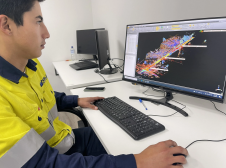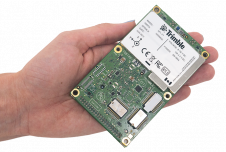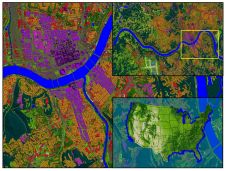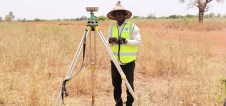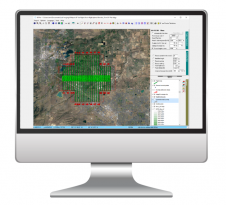FIG Standards Network
Early and Active Work by Professional Bodies
Standards are of great interest to surveyors, both as professionals and as business people. Early and active engagement with the process of standardisation by professional bodies such as the International Federation of Surveyors (FIG) should ensure more workable and timely standards that meet the needs of practitioners, their customers and the wider community.
The format of telephone and bank-ing cards, quality management, environmental management, but also the international freight container; paper sizes and the universal system of measurement known as SI are all examples of standardisation. Standards provide economic benefits, bringing confidence that things will work and will fit together. This increases in importance with key changes in the world, including:
- globalisation of trade: more and more businesses and consumers require confidence that trade can flow between countries and continent
- competition laws: the need to prove that equal opportunities and standards are applied to equivalent transactions
- 一个日益增长的消费需求,产品d services need to be guaranteed to meet certain criteria
- technological developments to a point at which most equipment users, whether in business or social arenas, will not be in a position to understand the detailed working of the equipment and thus to make unaided appropriate adjustments to results
- increasing intertwining of indus-tries and professions, such that professionals are expected to have a level of understanding beyond the discipline within which they are trained.
All of these trends point to the need for a common language of expectations. Standards are designed to provide this language and the necessary translation service. With the benefit to the German economy from standardisation amounting to more than US$15 billion per year, they cannot be ignored.
Surveyors and Standards
The development of technology means that professionals can no longer be expected fully to understand the detailed workings of the equipment that they use. Surely, standards thus become an integral part of the process within which professional surveyors fulfil the ‘special trust’ expect-ed of them by clients? In addition, complaints can be substantially reduced by the provision of comprehensive, comparable and transparent information. Global
standards can have a direct impact on the market, society and prosperity. Widespread adoption of International Standards would mean that suppliers would base their services on specifications enjoying worldwide acceptance. This would be to the advantage of both consumers and businesses. Surveyors in each of their twin roles should therefore care about standards.
Standardisation Bodies
ISO can perhaps be described as the ‘big daddy’ of standardisation bodies. A second standardisation body of relevance to surveyors is the International Valuation Standards Committee (IVSC). There are many others, including
- national standardisation bodies, which are increasingly adopt-ing international standards
- regional standardisation bodies, including groups such as NATO
- governments: all laws can be seen as setting standards
- companies: the larger of which can create de facto standards, such as those surrounding the Microsoft operating system.
Recognising wider interests, a variety of international organisations are registered by ISO as Liaison Bodies. These vary from Visa International to FIG. They may be involved in the standardisation process to the full extent of the national bodies, with the sole exception that they do not have a vote.
The work of ISO started in the arena of manufacturing. Service industries have become a focus for it far more recently. It is therefore unsurprising that land and engineering surveying is
more standardised than spatial planning. The ISO standards that existed for survey instruments such as theodolites and total stations were a case illustrating how standardisation can lose touch with reality. That reality is often a muddy building-site in the rain, whereas ISO standards required calibration standard facilities. In addition to this, two different and non-correlated standards covered similar ground. In recent years FIG, particularly its Commission 5 ‘Positioning and Measurement’, has worked with the relevant ISO technical committees to harmonise requirements, and a number of new standards in the series ISO 17123 have been published. These incorporate two levels of tests: periodic calibration and regular field-testing.
Definition of Standards
What are standards? A sensible place to start might be a dic-tionary. The Collins English Dictionary offers among its nineteen definitions of the word ‘standardisation’ the following: ‘of the usual, regularised, medium or accepted size’; ‘denoted, or characterised by idiom, vocabulary etc, that is regarded as correct and acceptable by educated native speakers’; ‘an accepted or approved example of something against which others are judged or measured’; and ‘a level of excellence or quality’. The International Organization for Standardization (ISO) offers the following: ‘standards are documented agreements containing technical specifications or other precise criteria to be used consistently as rules, guidelines or definitions of characteristics, to ensure that materials, products, processes and services are fit for their purpose.’ This takes the dictionary definition of the word ‘standard’ and creates a process, purpose and measurement for it. From these two sources we can distinguish, perhaps, between ‘standards’ and ‘Standards’. The former are ‘norms’ against which we compare items for ‘acceptability’; the latter are formal, often legal, documents which define more closely what is deem-ed acceptable for a particular purpose and what is not. Both are of consequence to surveyors in their dual role as professionals and business people.
Geographic Information
最近的一个区域ISO关注涉及到地理的raphic Information (GI). A European initiative in the early to mid-1990s had resulted in some provisional GI standards, but ISO is now in the process of publishing over forty standards in the ISO 191xx series, and European standardisation work within the area has recently been recommenced. They cover aspects from terminology to coordinate reference systems, including crucial areas such as interoperability. This is in line with an industry move to open systems standards, and GIS manufacturers are key players in the ISO work. So are a number of professional surveying bodies of whom FIG, probably, is the most active. This work is underpinning government and industry moves towards interoperability of geographic data and systems between data providers and across national borders. The INSPIRE initiative to create a European Environmental Spatial Data Infrastructure, for example, plans to rely on ISO and CEN standards.
Key Role for FIG
Recognising the increasing import-ance of standards in the work of surveyors and the key role of professional bodies, especially at international level, in articulating requirements, FIG increased its focus on standards in the late 1990s. A range of activity has been underway since then, and further work continues. Overall, FIG wants to assist in the process of developing workable and timely official and legal standards covering the activities of surveyors. It also wants to develop the skills of surveyors and encourage the proper use of technology and activities. FIG will generally seek to ensure that de facto standards become official as technology matures, or at the very least that all relevant official, legal and de facto standards are produced in full knowledge of all other related material. FIG set up a Task Force on Standards in late 1997 to focus and co-ordin-ate its efforts. At its 2002 Congress FIG decided to set up a Standards Network. FIG has limited human and cash resources. Efforts should therefore be focused on those areas central to its members’ interests and where FIG can add value. Key benefits of FIG involvement include:
- improved two-way linkages between standards developers and practising surveyors, ensuring that developers are aware of user requirements and of what already exists and that practitioners are aware of standardisation work and its consequences for them
- improved standards, both in terms of workability and timeliness
- improved survey practice, with higher levels of conformance and quality, thus responding to customers’ growing expectations
- improved bottom line for both surveyors and their customers.
FIG Standards Network
Work of the Network currently includes:
- Maintaining information on the work of the different Commissions as relevant to standardisation.
- Strengthening links with other NGOs.
- Building further on FIG’s relationship with the International Valuation Standards Committee (IVSC).
FIG is currently reviewing its formal relationship with IVSC, recognising the important role FIG, particularly Commission 9, ‘Valuation and the Management of Real Estate’ can play in developing valuation standards.
- Input to ISO work on standards for survey instruments. FIG Commission 5 has been involved for some years in the ISO work of refining standards for survey instruments. The goal is a single, usable set of standards appropriate for field surveyors, and not just for calibration laboratories. Some of these standards are now published; Commission 5 will ensure that FIG continues its work in this field, with a particular current focus being a proposed standard on testing the repeatability of Real Time GPS measurements.
- Input to ISO work on Geographic Information Standards. The work of ISO Technical Committee (TC) 211 will have a profound impact on large numbers of surveyors. Many of its first-generation standards are conceptual models. TC211, however, has now moved into the more detailed area, including the development of registries. Location Based Services is a particular focus. Another is geodetic codes and parameters, where FIG has been asked to assist in compiling a library of the definitive transformations required to move between different coordinate reference systems. TC211 is also becoming the place where the geographic information community meets; the liaison members of the Committee include the Open Geospatial Consortium, the Global Spatial Data Infrastructure (GSDI) and FIG. FIG has played an active role, but has recognised that it can’t be involved in everything.
- 促进喜神贝斯的发展t practice and standards in the areas of construction economics (Commission 10, working with the International Cost Engineering Council) and spatial planning (Commission 8), areas not to date covered to any extent by official standards. Another area of interest to FIG is the further development of international hydrographic standards.
- Maintaining and building links with the ISO Central Secretariat.
- Maintaining a profile for the Network through articles, papers etc.
Cadastral Domain
One area not currently subject to international de jure standardisation is that of the cadastre. FIG some years ago submitted the Statement of the Cadastre for fast-tracking to become an international standard, but this was not taken forward by ISO due to concerns over interrelationship with national laws generally governing any cadastre. However, in a world of global trade, and with secure title to land being a key issue in human development, many stakeholders are demanding more commonality within the cadastral domain to provide the required security. FIG has long been respected as one of the leading international sources of expertise on the cadastre. A detailed, prescriptive specification on the content of a cadastre would be inappropriate given the very different legal and cultural frameworks within which national cadastres operate. ISO/TC211 has used a model-based approach to describing and specifying relevant matters, supported by a concept of registers to list instances that conform to the models. The route taken by FIG Commission 7, ‘Cadastre and Land Management’, over the last few years has mirrored this approach. Agreement within the FIG community on a core cadastral domain model is a very important step but does not provide the quasi-legal statement of that model required by many key international stakeholders. The FIG Standards Network and the links and performance record it has built within ISO therefore bridges FIG work and the ISO arena. This work is underway.
Concluding Remarks
There is still a good way to go before all FIG members are aware of the standardisation issues relevant to them and are providing appropriate input to the standards development process. The FIG Standards Network should facilitate increased mutual understanding between surveyors and standards developers.
Further Reading
Make your inbox more interesting.Add some geo.
Keep abreast of news, developments and technological advancement in the geomatics industry.
Sign up for free




